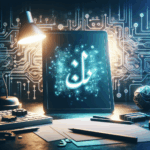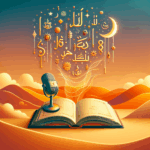The Arabic Alphabet in the Context of Global Communication
The Arabic alphabet is more than just a script; it’s a cultural bridge that connects millions of people across different continents. As we delve into the world of global communication, understanding the role of the Arabic alphabet becomes crucial. Whether you’re a language enthusiast or someone interested in global cultures, this post is for you! 🌍✨
Table of Contents
1. Introduction to the Arabic Alphabet
2. The Importance of the Arabic Alphabet in Global Communication
3. Challenges and Opportunities in Learning the Arabic Script
4. Arabic Alphabet in Technology and Media
5. Conclusion
6. FAQs
Introduction to the Arabic Alphabet
The Arabic alphabet consists of 28 letters and is written from right to left. It is the script not only for Arabic but also for several other languages, including Persian, Urdu, and Pashto. This makes it one of the most widespread writing systems globally. 📜
Each letter can take on different forms depending on its position in a word—initial, medial, final, or isolated. This unique feature adds a layer of complexity that many find fascinating yet challenging. But why is the Arabic script so significant in today’s world?
The Importance of the Arabic Alphabet in Global Communication
The Arabic language is spoken by over 400 million people worldwide, making it one of the top five most spoken languages. The alphabet is a cornerstone of this communication, enabling everything from daily conversations to international diplomacy. 🌐
Moreover, Arabic is the liturgical language of Islam, used in religious texts and practices by over a billion individuals. This gives the Arabic script a spiritual and cultural importance that transcends borders.
Challenges and Opportunities in Learning the Arabic Script
Learning the Arabic alphabet can be daunting. Its cursive nature and the presence of sounds not found in other languages can be challenging for non-native speakers. However, the rewards are immense! 🎓
Grasping the Arabic script opens doors to understanding rich literary works, diverse cultural expressions, and emerging markets in the Middle East and North Africa. Language learning apps and online courses have made it easier than ever to start learning, breaking down geographical and linguistic barriers.
Arabic Alphabet in Technology and Media
In the age of digital communication, the Arabic alphabet has found its place in technology and media. From social media platforms supporting Arabic script to Arabic content creation on YouTube, the digital world is embracing this ancient script. 📱
Furthermore, advancements in AI and machine learning are improving Arabic language processing, making it easier for businesses to engage with Arabic-speaking audiences. This technological integration highlights the script’s growing global influence.
Conclusion
The Arabic alphabet is more than just a set of letters; it is a powerful tool for global communication, cultural expression, and technological advancement. By understanding and appreciating this script, we can foster better communication and collaboration in our interconnected world. So, why not take the first step and learn a letter or two today? 😊
FAQs
Q1: Is the Arabic alphabet difficult to learn?
A: While it can be challenging due to its unique script and sounds, with consistent practice and the right resources, it becomes manageable and rewarding.
Q2: How is the Arabic alphabet used in technology?
A: It is widely used in digital communication, social media, and is supported by many tech platforms. AI advancements are also enhancing Arabic language processing.
Q3: Why is the Arabic alphabet significant in global communication?
A: It connects millions of speakers worldwide, plays a vital role in religious practices, and is critical in diplomatic and cultural exchanges.






